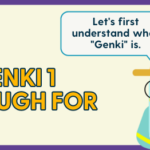Understanding the Difference Between “教師” (Kyōshi) and “先生” (Sensei)
In Japanese, both “教師” (kyōshi) and “先生” (sensei) are used to refer to people who teach, but their usage and nuances can be confusing. You might also hear “先生” (sensei) used to address doctors or lawyers in Japan. What’s behind this usage? Does “先生” carry any special meaning or emotion?
Let’s explore the differences between “教師” (kyōshi) and “先生” (sensei) and understand how to use them appropriately.
What is “教師” (Kyōshi)?
“教師” (kyōshi) is used primarily for individuals who formally teach in educational institutions like schools or tutoring centers.
- Objective Role: This term emphasizes the role of the person as an educator in an official capacity.
- Professional Aspect: It clearly indicates that teaching is their profession.
Examples:
- “彼は、小学校の教師です。” (Kare wa, shōgakkō no kyōshi desu.) – “He is an elementary school teacher.”
- “教師の採用試験を受ける” (Kyōshi no saiyō shiken o ukuru) – “Taking a teacher’s hiring exam.”
What is “先生” (Sensei)?
“先生” (sensei) is a more general term used to show respect towards anyone who teaches or imparts knowledge.
- Respectful Address: This term conveys respect towards the person teaching or guiding.
- Broad Use: It can refer to not only school teachers but also tutors, instructors in various fields, and even professionals like doctors and lawyers.
Examples:
- “ピアノの先生が褒めてくれた。” (Piano no sensei ga homete kureta.) – “The piano teacher praised me.”
- “数学の先生に質問した。” (Sūgaku no sensei ni shitsumon shita.) – “I asked the math teacher a question.”
Summary of Differences Between “教師” (Kyōshi) and “先生” (Sensei)
| Word |
Characteristics |
Usage Scenario |
| 教師 (Kyōshi) |
Objective role, professional aspect |
Schools, tutoring centers |
| 先生 (Sensei) |
Respectful address, broad meaning |
Various contexts, general respect |
Which One Should You Use?
The choice between “教師” (kyōshi) and “先生” (sensei) depends on the context and the nuance you want to convey:
- To show respect: Use “先生” (sensei).
- To emphasize the professional aspect: Use “教師” (kyōshi).
- To specify a profession: Use terms like “英語教師” (eigo kyōshi) – “English teacher,” or “数学教師” (sūgaku kyōshi) – “math teacher.”
Conclusion
Choosing the Right Term for the Situation
“教師” (kyōshi) refers to someone who teaches in a formal educational setting, emphasizing their role as a professional. On the other hand, “先生” (sensei) is a respectful term used more broadly in various situations.
For instance, saying “私は小学校の教師です” (Watashi wa shōgakkō no kyōshi desu) states your profession objectively, while “数学の先生が教えてくれた” (Sūgaku no sensei ga oshiete kureta) shows respect and indicates that someone taught you something.
Understanding these nuances adds depth to your Japanese language skills. If you’re keen to delve deeper into Japanese, explore the nuances of words like “先生” and “教師,” or want to improve your Japanese communication skills, check out JPLT Online Japanese Language School. We offer a range of courses from Japanese proficiency test preparation to everyday conversation practice.
Join our free online community to experience the joy of learning Japanese and make new discoveries in the language!
JPLT Online Japanese Language School:
https://jplt-dialogplus.com/



